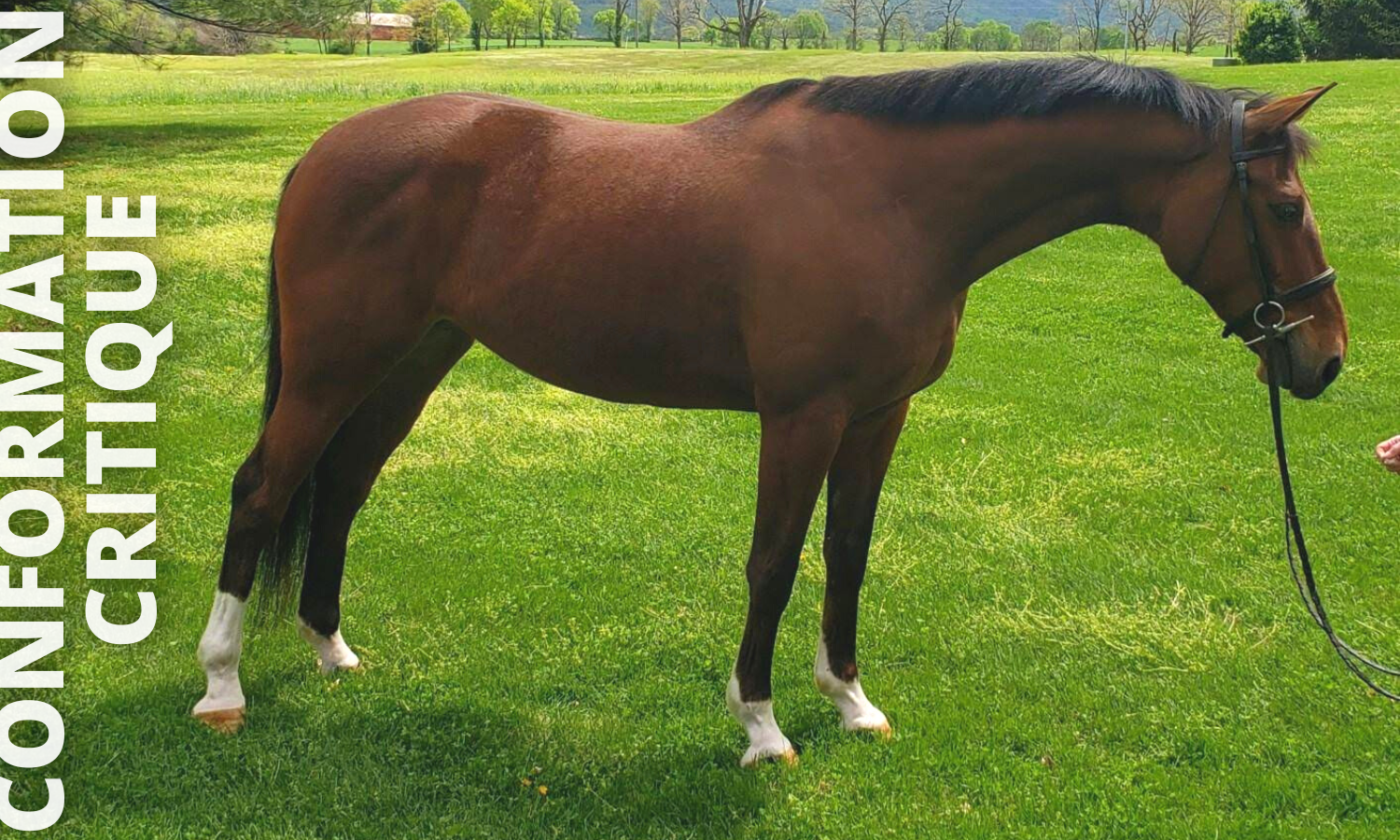Renew Your USEA Membership for the 2023 Season Today LEARN MORE

Have you ever wanted to look through the judge’s eyes and see what they see when evaluating a horse's conformation? Now is your chance! Using only a photo and information on age and breed, legendary horseman and past USEA Young Event Horse Championship judge Chris Ryan is sharing his insights into equine conformation in our Conformation Critique article series.
First Impression
Has this horse quality? The answer is definitely yes. This first impression is so important. As a selector for the Goresbridge Go for Gold Event horse sale, I have an abbreviation "GPO" which stands for "Good Pull Out." It means that the first look prompts the potential client the need to bring the horse out of his box for a further look.
That first "take" (in about three seconds!) shows the general proportions are correct as regards conformation. My eye is trained to be drawn to the horse's weakest point. There is nothing obvious here. It is amazing that the first impression is so accurate. I used to think it was some kind of mysterious "gut" feel. I think it is actually your brain automatically ticking so many boxes so quickly it seems intuitive. We then take the horse apart so to speak and then put him back together, and 99 percent of the time it is academic as that first shot is the most accurate.
Conformation
This mare has good length, depth, top line, and power. Nice length of rein and a good sloping shoulder with good neck-to-shoulder connection giving the rider plenty of horse in front of the saddle giving scope. Good depth gives room for good heart and lung function. Well-shaped quarters and hind leg make for jump technique and power. Good bone with a nice short cannon. The correct 45-degree angle of the front pasterns allows correct absorption of footfall up the front leg and into the shoulder. Some warmbloods are inclined to have contracted feet. This mare’s feet look well-shaped as far as I can see.
Movement
This mare has a good overtrack at the walk, which normally leads to a good gallop length of stride, both being four-time movements. This mare is inclined to "walk the line," as she almost crosses her front feet at footfall. This can lead to more strain on the splint bones, especially the outside ones. I’m not sure why but many horses who are close in front are also wide behind. This mare follows suit to a degree.
Good elevation at the trot and a quality canter which normally equates to a quality jump which again is backed up by some lovely jumping videos. I’ll take a good canter every time over a good trot. We jump out of the canter. Some people are obsessed with a huge trot. That huge trot can put a big strain on the front end of young horses. I observe that some of those big trotting horses have never learned a true balance at a canter from foals as they are inclined to just trot! This is a subjective opinion.
Overall Assessment
A fantastic temperament helps bring all the qualities of conformation together into performance. This mare has been beautifully produced and is obviously giving her rider huge satisfaction. A little "bug bear" of mine (!!!) is when in hand one should turn the horse away from the handler when turning. This automatically puts the inside hind leg under the horse so when asked to transition into a trot the horse is well prepared. When asked to turn towards the handler the quarters fall out.
Interested in submitting your horse to be critiqued? Send your high-resolution conformation photos and video to Meagan DeLisle at mdelisle@useventing.com for your chance to be featured.
About Chris Ryan
Chris Ryan comes from one of the most storied families in Ireland. Following in his father’s footsteps, Ryan hunted the legendary Scarteen hounds for 28 seasons. The Scarteen hounds have been in the Ryan family for more than 400 years. From racing in his youth, to huntsman, and now judge and commentator, Ryan has become a regular part of eventing life in Ireland and Europe. One of the foundation selectors of the Goresbridge Go for Gold elite event horse sale held every November in Wexford, Ryan has developed a keen eye for young stock, many having gone on to great things in Ireland, England, and Europe. He is best known in the United States for finding McKinlaigh, the horse with whom Gina Miles won the individual silver medal at the 2008 Beijing Olympic Games, and producing him from a 3-year-old to a 5-year-old at his first Preliminary level event. International winning and placed horses including Copper Beach, Cooley Rourkes Drift, Cooley SRS, November Night, Prince Mayo, Glencento, Reenmore Duke, Ballymurphy Mark, and many others all came under his eye and passed the test. All this experience is blended with an instinct for what is required and the genetics to operate at the highest level.